Iopidine Eye Drops 0.5% – Apraclonidine 0.5% Eye Drops, 5ml
- Active Ingredient: Apraclonidine 0.5%
- Treatment of Chronic Glaucoma
- Prescription Product
- Active Ingredient: Apraclonidine 0.5%
- Treatment of Chronic Glaucoma
- Prescription Product
Original price was: £17.90.£16.30Current price is: £16.30.
CompareCompare- Active Ingredient: Apraclonidine 0.5%
- Treatment of Chronic Glaucoma
- Prescription Product
- Description
- Additional Information
- Brand
- How To Use
- Product Details
- Side Effects
- Ingredients
- Reviews (0)
- Questions & Answers
Iopidine Eye Drops 0.5% – Apraclonidine 0.5% Eye Drops, 5ml
If you’re one of the many people suffering from chronic glaucoma, Iopidine Eye Drops 0.5% may be the answer you’ve been looking for. This innovative solution contains apraclonidine hydrochloride, an active substance that helps to reduce fluid pressure in the eye and delay the need for surgery. Already being used successfully by many people with chronic glaucoma, Iopidine is a safe and effective way to ease your symptoms and improve your quality of life. Give it a try today – your eyes will thank you!
Benefits of Iopidine Eye Drops 0.5%
Iopidine Eye Drops 0.5%, solution contain apraclonidine (as hydrochloride) as the active substance.
IOPIDINE 5mg/ml Eye Drops belongs to a group of medicines known as alpha agonists.
It is used in the treatment of chronic glaucoma in people who are already receiving other medicines to treat this disease.
In these people, IOPIDINE helps to reduce the fluid pressure in the eye and can delay the need for pressure-relieving eye surgery.
What is Glaucoma?
Glaucoma is a common eye condition where the optic nerve, which connects the eye to the brain, becomes damaged.
It’s usually caused by fluid building up in the front part of the eye, which increases pressure inside the eye.
Your eye contains a clear, watery liquid that feeds the inside of the eye. Liquid is constantly being drained out of the eye and new liquid is made to replace this. If the liquid cannot drain out quickly enough, the pressure inside the eye builds up. This medicine works by increasing the amount of liquid that is drained. This reduces the pressure inside the eye. If the high pressure is not reduced, it could lead to a disease called glaucoma and eventually damage your sight.
Glaucoma can lead to loss of vision if it’s not diagnosed and treated early.
It can affect people of all ages, but is most common in adults in their 70s and 80s.
Glaucoma does not usually cause any symptoms to begin with.
It tends to develop slowly over many years and affects the edges of your vision (peripheral vision) first.
For this reason, many people do not realise they have glaucoma, and it’s often only picked up during a routine eye test.
If you do notice any symptoms, they might include blurred vision, or seeing rainbow-coloured circles around bright lights.
Both eyes are usually affected, although it may be worse in 1 eye.
Very occasionally, glaucoma can develop suddenly and cause:
Visit an opticians or a GP if you have any concerns about your vision.
If you have glaucoma, early diagnosis and treatment can help stop your vision getting worse.
Without treatment, glaucoma can eventually lead to blindness.
If you develop symptoms of glaucoma suddenly, go to your nearest eye casualty unit or A&E as soon as possible.
This is a medical emergency that may require immediate treatment.
There are several different types of glaucoma.
The most common is called primary open angle glaucoma. This tends to develop slowly over many years.
It’s caused by the drainage channels in the eye becoming gradually clogged over time.
Other types of glaucoma include:
- acute angle closure glaucoma – an uncommon type caused by the drainage in the eye becoming suddenly blocked, which can raise the pressure inside the eye very quickly
- secondary glaucoma – caused by an underlying eye condition, such as inflammation of the eye (uveitis)
- childhood glaucoma (congenital glaucoma) – a rare type that occurs in very young children, caused by an abnormality of the eye
Glaucoma can occur for a number of reasons.
Most cases are caused by a build-up of pressure in the eye when fluid is unable to drain properly.
This increase in pressure then damages the nerve that connects the eye to the brain (optic nerve).
It’s often unclear why this happens, although certain things can increase the risk, including:
- your age – glaucoma becomes more common as you get older
- your ethnicity – people of African, Caribbean or Asian origin are at a higher risk
- your family history – you’re more likely to develop glaucoma if you have a parent or sibling with the condition
- other medical conditions – such as short-sightedness, long-sightedness and diabetes
It’s not clear whether you can do anything to prevent glaucoma, but having regular eye tests should pick it up as early as possible.
The treatment recommended for you will depend on the type of glaucoma you have, but the options are:
- eyedrops – to reduce the pressure in your eyes
- laser treatment – to open up the blocked drainage tubes or reduce the production of fluid in your eyes
- surgery – to improve the drainage of fluid
You’ll also probably need regular appointments to monitor your condition and check the treatment is working.
Further Information on Glaucoma
Iopidine Eye Drops 0.5% Reviews
After using Iopidine Eye Drops 0.5%, it’s helpful to let others know about your experience. Reviews of an item help other users know that medicines received have helped the condition it is claimed for, how well the treatment worked or any issues to be aware of. We invite our users to leave a review of both their treatment and of the service provided. Click on the reviews tab to see if there has been feedback on this item.
What is the price of Iopidine Eye Drops 0.5%?
The price of Iopidine Eye Drops 0.5% is £16.30
Where to buy Iopidine Eye Drops 0.5%
Iopidine Eye Drops 0.5% is available to buy with a prescription at Dock Pharmacy Essex UK, UK Online Pharmacy.
You can buy Iopidine Eye Drops 0.5% uk with a prescription or with a vets prescription.
Related Article
| Brand | |
|---|---|
Brand
IOPIDINE
How To Use
How to use IOPIDINE
The recommended dose
The recommended dose is 1 drop into your eye(s), 3 times each day.
Remove the loose collar from the cap when the bottle is first opened.
Always use IOPIDINE exactly as your doctor has told you. You should check with your doctor or pharmacist if you are not sure.
Product Details
What you need to know before you use IOPIDINE
Do not use IOPIDINE:
• if you have a history of severe or unstable heart disease or circulatory problems.
• if you are allergic to apraclonidine, clonidine or any of the other ingredients of this medicine listed in section 6.
• if you are currently taking monoamine oxidase inhibitors antidepressants or tricycylic antidepressants.
• if you are currently taking medicines of the class of sympathomimetics that are taken either orally or via injection.
• in CHILDREN .
Ask your doctor for advice
Warnings and precautions
IOPIDINE may not continue to control your eye pressure after you have used them for a period of
time. Your doctor will examine you often while you are using IOPIDINE to see whether the eye
drops are still working for you.
• As IOPIDINE decreases the pressure in your eye(s), you should have your eye pressure checked
regularly to ensure that the pressure in your eye(s) remains under control.
If you have a history of, or are taking medicine to treat, any of the following:
• Any heart disease (including angina, heart attacks or heart failure)
• High blood pressure or other circulatory problems (including stroke, Raynaud’s disease and
fainting spells)
• Kidney or liver problems
• Depression
• Parkinson’s disease
• Diabetes or low blood sugar. IOPIDINE may hide the signs and symptoms of a sudden reduction
in blood sugar such as a fast heart beat or trembling.
• If you are due to have an operation.
If any of these apply, you may still be able to use IOPIDINE, but discuss it with your doctor first.
Using IOPIDINE with food, drink and alcohol
No alcohol should be consumed during treatment with IOPIDINE as it can increase its effects.
Other medicines and IOPIDINE
Tell your doctor or pharmacist if you are taking or have recently taken any other medicines,
including medicines obtained without a prescription.
IOPIDINE must not be used if you are taking monoamine oxidase inhibitor antidepressants or
tricyclic antidepressants. IOPIDINE must also not be used if your are taking medicines of the class of
sympathomimetics that are taken either orally or via injection.
IOPIDINE may increase the effects of some medicines used to treat – depression – asthma – high blood pressure – heart medicines containing digoxin or digitoxin – some forms of mental illness and Parkinson’s disease; and may interact with – some pain killers – sedatives – anaesthetic – tricyclic antidepressants – phenothiazines – cough and cold remedies – glaucoma medications such as timolol, brimonidine or dipivefrine – eye drops used to whiten the eye.
Pregnancy and breast-feeding
If you are pregnant or breast-feeding, think you may be pregnant, or are planning to have a baby, ask your doctor or pharmacist before taking this medicine.
IOPIDINE should not be used during pregnancy or breast-feeding.
Driving and using machines
This type of medicine may cause you to feel sleepy and dizzy. If you do, you should not drive or operate machinery.
Important information if you wear Contact Lenses
IOPIDINE contains benzalkonium chloride
This medicine contains 0.1 mg of benzalkonium chloride in each ml of the product which is equivalent to 0.01%.
IOPIDINE contains a preservative (benzalkonium chloride) which may be absorbed by soft contact lenses and may change the colour of the contact lenses. You should remove contact lenses before using this medicine and put them back 15 minutes afterwards. Benzalkonium chloride may also cause eye
irritation, especially if you have dry eyes or disorders of the cornea (the clear layer at the front of the eye). If you feel abnormal eye sensation, stinging or pain in the eye after using this medicine, talk to your doctor
Take special care:
• Only use IOPIDINE for dropping in your eye(s).
Side Effects
Like all medicines, this medicine can cause side effects, although not everybody gets them.
IOPIDINE can cause allergic reactions. If you experience one or more of the following eye
symptoms – redness – itching – discomfort – watery eyes – abnormal sensation – eye and eyelid
swelling – poor vision – see your doctor immediately.
If your vision gets worse straight after using IOPIDINE, stop use and see your doctor immediately.
• You may experience some or all of the following effects in your eye(s):
Very Common (may affect more than 1 in 10 people): increased redness – itching – inflammation.
Common (may affect upto 1 in 10 people): discomfort – watery eyes – swelling of the eyelids – gritty
feeling in the eye – dry eye – eyelid crusting.
Uncommon (may affect upto 1 in 100 people : bumps under the eyelids – swelling of the eye –
abnormal vision – pain – inflammation and irritation of the eye or eyelids – corneal (the front part of
your eye) surface damage – sensitivity to light – redness of the eyelid – raising or pulling up of the
eyelids – increase in pupil size – reduced vision – blurred vision – drooping of eyelid – discharge or
whitening of the eye.
• You may also experience effects in other areas of your body including:
Common (may affect upto 1 in 10 people): dry mouth – inflammation inside the nose – dermatitis – dry
nose – weakness – headache – unusual taste.
Uncommon (may affect upto 1 in 100 people): chest pain – swelling of your hands, feet or extremities –
irregular heart beat – constipation – nausea – feeling tired – sore throat – runny nose – muscle aches –
poor coordination – sleepiness – dizziness – tingling feeling – nervousness – depression – difficulty
sleeping – shortness of breath or difficulty breathing – unusual sense of smell – facial swelling –
irritability – widening of blood vessels.
Reporting of side effects
If you get any side effects, talk to your doctor or pharmacist. This includes any possible side effects
not listed in this leaflet. You can also report side effects directly via the national reporting system (see
details below). By reporting side effects you can help provide more information on the safety of this
medicine.
How to store IOPIDINE
• Keep this medicine out of the sight and reach of children.
• Do not refrigerate or freeze or store above 25°C.
• Keep the bottle tightly closed and in the outer carton.
• Do not use this medicine after the expiry date which is stated on the bottle and the carton after
EXP. The expiry date refers to the last day of that month.
• Stop using the bottle 4 weeks after first opening, to prevent infections.
• Do not throw away any medicines via wastewater or household waste. Ask your pharmacist how to
dispose of medicines you no longer use. These measures will help protect the environment.
Ingredients
What IOPIDINE contains
• The active substance is apraclonidine 5 mg/ml (as hydrochloride).
• The other ingredients are sodium chloride, sodium acetate trihydrate, benzalkonium chloride,
hydrochloric acid and/or sodium hydroxide (to adjust pH) and purified water.
Only logged in customers who have purchased this product may leave a review.
Questions and answers of the customers
There are no questions yet, be the first to ask something for this product.
You Might Also Like
Original price was: £17.90.£14.50Current price is: £14.50.
- The active substances are brinzolamide and brimonidine tartrate
- Treatment for Glaucoma
- Prescription Product
Original price was: £17.90.£14.50Current price is: £14.50.
- Availability: out of stock
Original price was: £14.50.£7.90Current price is: £7.90.
- You can buy Latanoprost eye drops for dogs and cats online with a Vet valid prescription.
- Treatment for Glaucoma
Learn More
Original price was: £14.50.£7.90Current price is: £7.90.
- Availability: in stock
Original price was: £20.05.£18.50Current price is: £18.50.
- Treatment of Glaucoma
- Active Ingredients: latanoprost and timolol.
- Prescription Product
- Vet Prescription Accepted
Original price was: £20.05.£18.50Current price is: £18.50.
- Availability: in stock
Original price was: £12.99.£9.49Current price is: £9.49.
- Treatment of open angle glaucoma or ocular hypertension.
- Active Ingredient: Brimonidine tartrate
- Prescription Product
- Vet Prescription Accepted
Original price was: £12.99.£9.49Current price is: £9.49.
- Availability: in stock
Other Products From This Seller
Original price was: £34.99.£24.95Current price is: £24.95.
Wahl Extreme Grip Beard Trimmer Precision Grooming with Comfort Grip and Adjustable Cutting Lengths Take Control of Your Grooming with the Wahl Extreme Grip Beard Trimmer Transform your grooming routine with the Wahl Extreme Grip Beard Trimmer, designed for precision, comfort, and versatility. Whether you’re sculpting a sharp beard line, maintaining stubble, or styling longer […]
Learn MoreOriginal price was: £34.99.£24.95Current price is: £24.95.
- Availability: in stock
Original price was: £23.99.£17.95Current price is: £17.95.
WAHL Vogue Corded Hair Clipper for Men Professional Precision with Adjustable Taper Lever and High-Carbon Steel Blades Transform Your Grooming Routine with the WAHL Vogue Corded Hair Clipper for Men Elevate your grooming experience with the WAHL Vogue Corded Hair Clipper, a professional-grade grooming tool designed for men who value precision and performance. Whether you’re […]
Learn MoreOriginal price was: £23.99.£17.95Current price is: £17.95.
- Availability: in stock
Original price was: £30.00.£8.95Current price is: £8.95.
Wahl Peaky Blinders Beard Trimmer Gift Set Limited Edition Cordless Grooming Kit for Men Join the ranks of the Peaky Blinders with the Wahl Peaky Blinders Beard Trimmer Gift Set. This exclusive collaboration between Wahl and the iconic TV series offers a comprehensive grooming solution for the modern gentleman. Key Features: Rechargeable Cordless Trimmer: Equipped […]
Learn MoreOriginal price was: £30.00.£8.95Current price is: £8.95.
- Availability: in stock
Original price was: £54.63.£39.95Current price is: £39.95.
OMRON RS2 Wrist Blood Pressure Monitor Compact and Accurate BP Monitoring The OMRON RS2 Wrist Blood Pressure Monitor is a compact and user-friendly device designed for quick and accurate blood pressure and pulse rate measurements. Utilizing the oscillometric method, it ensures reliable readings with minimal user input. Key Features: Automatic Inflation: The device inflates the […]
Learn MoreOriginal price was: £54.63.£39.95Current price is: £39.95.
- Availability: in stock
Original price was: £69.99.£59.99Current price is: £59.99.
Omron M4 Intelli IT Blood Pressure Monitor Bluetooth-Enabled Upper Arm BP Monitor with Intelli Wrap Cuff The Omron M4 Intelli IT Blood Pressure Monitor is a clinically validated device designed for easy and accurate blood pressure monitoring at home. With Bluetooth connectivity, it seamlessly syncs your readings to the Omron Connect app, allowing you to […]
Learn MoreOriginal price was: £69.99.£59.99Current price is: £59.99.
- Availability: in stock
Original price was: £39.99.£33.95Current price is: £33.95.
Omron M2+ Upper Arm Blood Pressure Monitor The Omron M2+ Upper Arm Blood Pressure Monitor is a fully automatic device designed to provide quick and accurate blood pressure and pulse rate measurements. Utilizing the oscillometric method, it ensures reliable readings with minimal user input. Key Features: IntelliSense Technology: Automatically inflates the cuff to the ideal […]
Learn MoreOriginal price was: £39.99.£33.95Current price is: £33.95.
- Availability: in stock
Original price was: £19.99.£9.95Current price is: £9.95.
Ted Baker M Gift Set 30ml EDT Spray and 150ml Body Wash Experience the refined elegance of the Ted Baker M Gift Set, comprising a 30ml Eau de Toilette Spray and a 150ml Body Wash. This meticulously crafted set offers a harmonious blend of notes, encapsulating masculinity and sophistication. Ideal for gifting or personal indulgence, […]
Learn MoreOriginal price was: £19.99.£9.95Current price is: £9.95.
- Availability: in stock
Original price was: £33.00.£19.99Current price is: £19.99.
Iceberg Twice Pour Homme Eau de Toilette 125ml Gift Set Aromatic Fougère Fragrance for Men Discover the timeless elegance of Iceberg Twice Pour Homme Eau de Toilette 125ml Gift Set, a sophisticated aromatic fougère fragrance designed for the modern man. This exclusive gift set includes a 125ml Eau de Toilette, offering a complete scent experience […]
Learn MoreOriginal price was: £33.00.£19.99Current price is: £19.99.
- Availability: in stock
Original price was: £44.00.£28.95Current price is: £28.95.
Davidoff Cool Water Gift Set For Men, 2pc Gift set Dive into the invigorating essence of the ocean with the Davidoff Cool Water Gift Set for Men. This exclusive 2-piece set includes a 4.2 fl. oz. Eau de Toilette and a 2.5 fl. oz. After Shave Balm, offering a complete grooming experience that embodies freshness […]
Learn MoreOriginal price was: £44.00.£28.95Current price is: £28.95.
- Availability: in stock
Original price was: £19.95.£9.95Current price is: £9.95.
Ted Baker W Pink Gift Set 30ml EDT and 150ml Shower Gel Experience the elegance of Ted Baker W Pink Gift Set, comprising a 30ml Eau de Toilette and a 150ml Shower Gel. This exquisite set offers a harmonious blend of floral and woody notes, encapsulating femininity and sophistication. Ideal for gifting or personal indulgence, […]
Learn MoreOriginal price was: £19.95.£9.95Current price is: £9.95.
- Availability: in stock


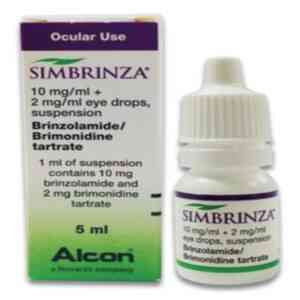
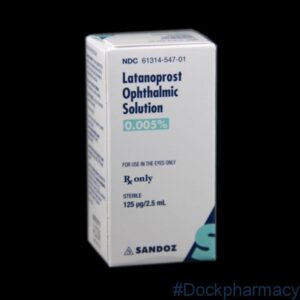
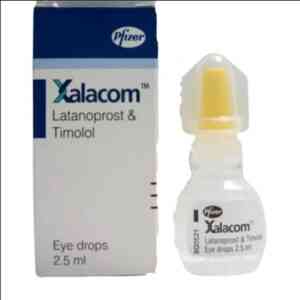
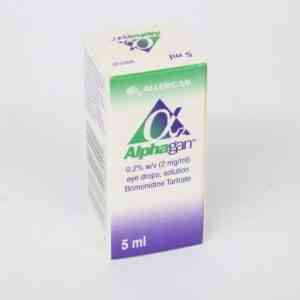












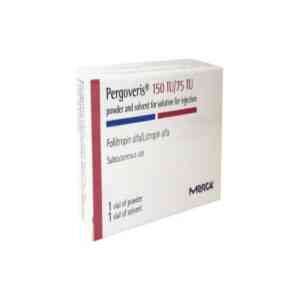
Reviews
There are no reviews yet